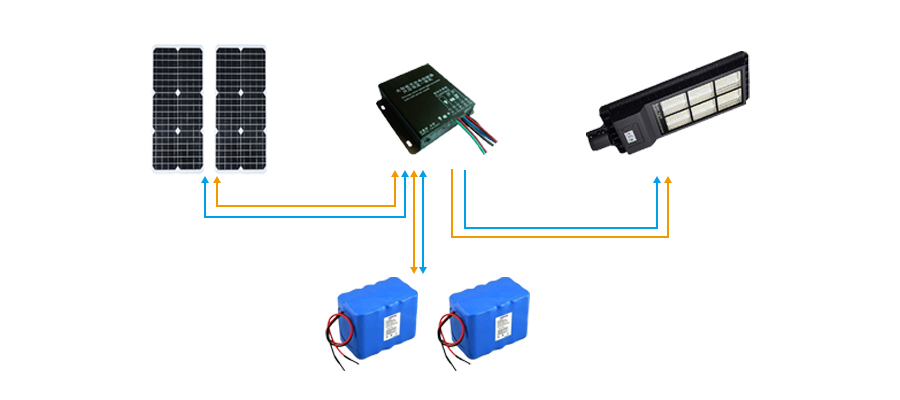How to Design and Calculate Solar Powered Street Lamp?
2021-05-17
VIEW "2623
Solar powered street lamp is powered by solar energy used for outdoor lighting. It can be customized based on the climate conditions and different requirements. This article will guide you how to design and calculate your own solar powered street lamp?
1. Solar Powered Street Lamp System
Solar powered street lamp refers to a new environmentally friendly and green lighting that uses solar energy as energy source, semiconductor LED as light source, and intelligently manages the on and off of street lights. Compared with the general solar lighting system, the design of the solar powered street lamp has the same basic principles, but there are more factors to consider. The components of the solar powered street lamp are listed below.

(1) Solar cells, they are used to generate electricity when there is sunlight. The power generation is calculated based on the power used for lighting and the lighting time.
(2) Battery. The function of the battery is to store the electricity generated by the solar battery when there is no sunlight. The capacity of the battery is determined according to the power of the solar battery and the power of the LED light and the lighting time.
(3) Charge controller. The function of the controller is to control the charge level when the sun is sufficient and the light time is long. The battery will stop charging when the battery is full, so as to protect the battery and prolong its service life.
(4) LED controller, which is the core control circuit of LED street lights. Its control functions include: complete the constant current drive control of the LED, so that the current flowing through the LED does not change with the voltage of the battery. With light control function, the lights will be on automatically in the day and the lights will be turned off automatically when it is dark. Low voltage protection, when the battery voltage drops to 10.8V, the output is turned off to avoid damage to the battery due to over-discharge.
(5) LED lighting fixtures, LED lighting fixtures have the advantages of high luminous efficiency and long life. At present, the LED light source for solar powered street lamps is a modular structure composed of multiple LEDs.

2. Data required for the design of solar powered street lamp
The design of the solar powered street lamp can also be based on the general solar power system, first determine the power of the solar cell, and then calculate the capacity of the battery. However, solar LED street lights have their particularities and need to ensure the stability and reliability of the system. Therefore, special attention should be paid to the following aspects of data when designing.
(1) In which area the solar LED street light is used, the sunlight radiation of the place, and the longitude and latitude of the place where the solar LED street light is used. Understand and master the meteorological resources of the place of use, such as monthly average solar radiation, average temperature, wind and rain data. The best solar street lamp manufacturer can determine the local solar standard peak hours (h) and the inclination angle and azimuth angle of solar cells according to these conditions.
(2) The power (W) of the light source selected for the solar LED street light. The power of the light source directly affects the parameters of the entire system.
(3) The working time (h) of the solar LED street light every night (h), which is the core parameter that determines the size of the components in the solar powered street lamp. Through the determined working time, the daily power consumption of the load and the corresponding charging current of solar cell can be calculated.
(4) The number of continuous cloudy and rainy days (d) of the solar LED street light use area. This parameter determines the size of the battery capacity and the solar battery power required to restore the battery capacity after the cloudy and rainy days. Determine the number of days between two consecutive cloudy and rainy days, which will determine the solar cell power required by the system to fully charge the battery after a continuous cloudy and rainy day.

